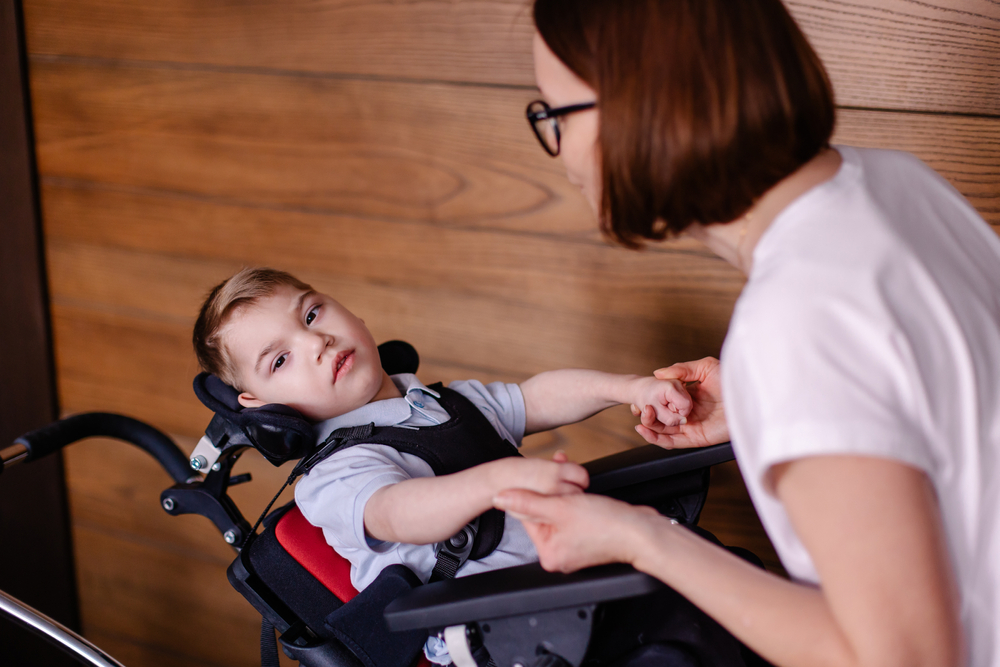Defining Birth Injuries
Birth injuries refer to any harm or damage sustained by a newborn during the process of labor and delivery. These injuries can range from minor bruises to severe neurological damage. It is crucial to distinguish between birth injuries and birth defects, as the latter are typically caused by genetic or environmental factors during pregnancy.
Common Causes of Birth Injuries
Several factors can contribute to birth injuries, including:
- Prolonged labor: Extended labor can put undue stress on both the mother and the baby, increasing the risk of injury.
- Improper use of delivery tools: Misuse of forceps or vacuum extractors can cause physical trauma to the newborn.
- Oxygen deprivation: Any interruption in the baby’s oxygen supply during delivery can lead to serious complications, including brain damage.
- Medical errors: Mistakes made by healthcare providers, such as incorrect medication or delayed C-sections, can result in birth injuries.
Medical Standards and Negligence
Medical professionals are expected to adhere to established standards of care during childbirth. When these standards are not met, and negligence occurs, it can lead to birth injuries. Negligence may involve:
- Failure to monitor: Not properly monitoring the baby’s heart rate or the mother’s condition during labor.
- Delayed response: Failing to act promptly in emergency situations, such as performing a necessary C-section.
- Inadequate prenatal care: Not providing appropriate care and guidance during pregnancy, which can contribute to complications during delivery.
Understanding what constitutes birth injury malpractice is essential for parents who may need to seek legal help to secure their child’s future.
Identifying Signs of Birth Injury in Newborns
Physical Symptoms
Newborns who have suffered birth injuries may exhibit a range of physical symptoms. These can include unusual muscle stiffness or looseness, difficulty in moving limbs, or an abnormal posture. Other signs might be excessive crying, feeding difficulties, or seizures. It’s crucial for parents to monitor their newborns closely and seek medical advice if any of these symptoms are observed.
Developmental Delays
Developmental delays can be a significant indicator of birth injuries. Parents should be aware of milestones such as rolling over, sitting up, and walking. If a child is not meeting these milestones within the expected timeframes, it may be a sign of an underlying issue. Early intervention is key to addressing developmental delays and improving outcomes for the child.
Diagnostic Tests and Procedures
To confirm a birth injury, various diagnostic tests and procedures may be necessary. These can include imaging tests like MRIs or CT scans, as well as blood tests and neurological exams. Early diagnosis is essential for planning appropriate treatments and interventions. Parents should consult with healthcare professionals to understand the best course of action for their child’s specific condition.
Legal Rights and Options for Affected Families
When a child suffers a birth injury due to medical malpractice, families have several legal rights and options to consider. Understanding these rights is crucial for seeking justice and ensuring the child’s future well-being.
Understanding Medical Malpractice Law
Medical malpractice law provides a framework for families to seek compensation when medical professionals fail to meet the standard of care. This includes proving that negligence directly caused the birth injury. Legal claims can help cover the child’s care and expenses, as seen in cases like the $19.3 million settlement reached in a birth injury lawsuit in Washington, DC.
Filing a Birth Injury Lawsuit
Filing a birth injury lawsuit involves several steps:
- Consulting with a specialized attorney: It’s essential to find a lawyer experienced in birth injury cases.
- Gathering evidence: This includes medical records, expert testimonies, and other relevant documentation.
- Filing the claim: The attorney will file the lawsuit on behalf of the family.
- Negotiating settlements: Many cases are settled out of court, but some may go to trial.
Compensation and Settlements
Compensation in birth injury cases can cover various expenses, including medical bills, rehabilitation costs, and long-term care. Settlements can provide financial relief and support for the child’s future needs. For instance, parents in Washington, DC, held a hospital accountable for medical mistakes, resulting in a significant settlement. Legal claims help cover the child’s care and expenses, ensuring they receive the necessary support.
Choosing the Right Legal Representation
Selecting the right legal representation is crucial for a successful outcome. Families should look for qualities such as experience, empathy, and a proven track record. Experienced lawyers nationwide can offer valuable insights and support throughout the legal process. Free consultations are often available to help families make informed decisions.
Choosing the Right Legal Representation
Qualities of a Good Birth Injury Lawyer
Selecting the right legal representation is crucial for families dealing with birth injury malpractice. A good birth injury lawyer should have the following qualities:
- Experience: Extensive experience in handling birth injury cases.
- Knowledge: In-depth understanding of medical malpractice law.
- Compassion: Empathy and understanding towards the affected families.
- Communication Skills: Ability to clearly explain legal terms and processes.
- Track Record: Proven success in securing favorable outcomes for clients.
Questions to Ask Potential Lawyers
When interviewing potential lawyers, families should consider asking the following questions:
- How many birth injury cases have you handled?
- What is your success rate in these cases?
- Can you provide references from past clients?
- How do you approach a birth injury case?
- What are the potential outcomes of my case?
- How will you keep me informed throughout the process?
Evaluating Legal Fees and Costs
Understanding the financial aspect of hiring a lawyer is essential. Families should inquire about:
- Fee Structure: Whether the lawyer charges a contingency fee or an hourly rate.
- Additional Costs: Any extra costs that may arise during the case, such as court fees or expert witness fees.
- Payment Plans: Availability of payment plans or financial assistance.
- Transparency: Clear and upfront communication about all potential costs.
Choosing the right legal representation can significantly impact the outcome of a birth injury case, making it essential for families to carefully evaluate their options.
Preparing for a Birth Injury Case
Gathering Medical Records
The first step in preparing for a birth injury case is to gather all relevant medical records. This includes prenatal care documents, labor and delivery notes, and postnatal care records. These documents are crucial for establishing a timeline and identifying any deviations from standard medical practices.
Expert Witnesses and Their Role
Expert witnesses play a vital role in birth injury cases. These professionals, often medical experts, provide testimony that can help establish whether medical negligence occurred. Their insights can be pivotal in demonstrating how the standard of care was breached.
Navigating the Legal Process
Navigating the legal process can be complex and daunting. It involves several steps:
- Initial Consultation: Meeting with a qualified birth injury lawyer to discuss the case.
- Filing the Lawsuit: Officially filing the birth injury lawsuit in the appropriate court.
- Discovery Phase: Both parties gather evidence, including depositions and interrogatories.
- Settlement Negotiations: Attempting to reach a settlement before going to trial.
- Trial: If a settlement is not reached, the case goes to trial where both sides present their arguments.
Understanding these steps can help families feel more prepared and less overwhelmed during the legal proceedings.
Long-Term Implications of Birth Injuries
Birth injuries can have profound and lasting effects on a child’s health and development. These injuries may lead to chronic physical and cognitive challenges that require ongoing medical care and support. Families often face significant emotional and financial burdens as they navigate the complexities of raising a child with special needs. It is crucial for parents to understand the potential long-term implications to better prepare and seek appropriate resources.
Impact on Child’s Health and Development
Children who suffer from birth injuries may experience a range of health issues, including motor skill impairments, speech and language delays, and cognitive disabilities. These conditions can affect their ability to perform daily activities and achieve developmental milestones. Early intervention and specialized therapies are essential to help mitigate some of these challenges and improve the child’s quality of life.
Financial Burden on Families
The cost of caring for a child with birth injuries can be overwhelming. Medical expenses, including surgeries, medications, and ongoing therapies, can quickly add up. Additionally, parents may need to make modifications to their home or vehicle to accommodate their child’s needs. Many families also face lost income if one parent must reduce work hours or leave their job to provide full-time care. Accessing financial assistance and exploring insurance options can help alleviate some of these burdens.
Support and Resources Available
There are numerous resources available to support families dealing with birth injuries. Organizations such as the Stanford Medicine Children’s Health provide valuable information on causes and common injuries, as well as services, doctors, locations, research, and patient resources. Support groups and online communities can offer emotional support and practical advice from other parents facing similar challenges. Additionally, government programs and non-profit organizations may provide financial aid, respite care, and other essential services to help families manage the long-term implications of birth injuries.
Preventive Measures and Advocacy
Prenatal Care Best Practices
Ensuring optimal prenatal care is crucial in minimizing the risk of birth injuries. Expectant mothers should adhere to the following best practices:
- Regular prenatal check-ups: Consistent visits to a healthcare provider help monitor the baby’s development and catch potential issues early.
- Healthy lifestyle choices: Maintaining a balanced diet, avoiding harmful substances, and staying active contribute to a healthier pregnancy.
- Education and awareness: Understanding the stages of pregnancy and potential risks can empower parents to make informed decisions.
Advocating for Better Medical Standards
Advocacy plays a significant role in improving medical standards and reducing birth injuries. Families and communities can engage in advocacy by:
- Supporting legislation: Backing laws that enforce stricter medical protocols and accountability for healthcare providers.
- Joining advocacy groups: Participating in organizations that focus on maternal and child health can amplify the call for better standards.
- Raising public awareness: Sharing personal stories and information about birth injuries can help educate others and drive change.
Raising Awareness About Birth Injuries
Raising awareness is essential in preventing birth injuries and supporting affected families. Effective strategies include:
- Educational campaigns: Organizing events and distributing materials that inform the public about birth injuries and prevention.
- Social media outreach: Utilizing platforms like Facebook, Twitter, and Instagram to spread awareness and connect with a broader audience.
- Collaborating with healthcare providers: Working with doctors and hospitals to ensure they provide comprehensive information to expectant parents.





